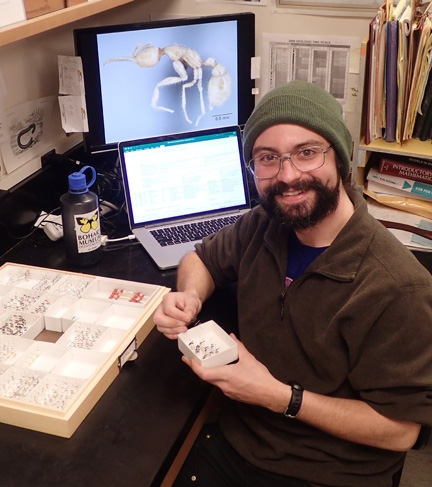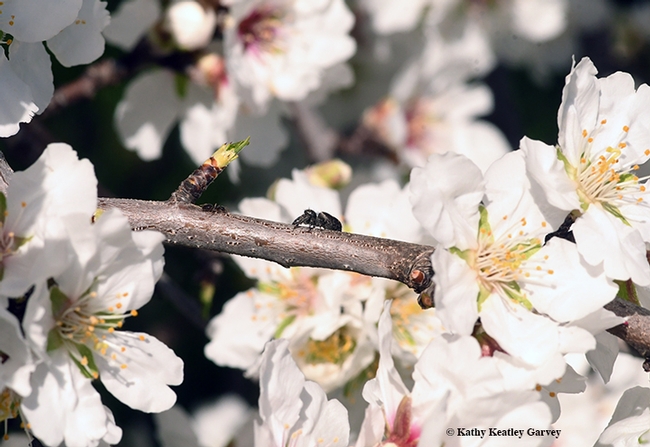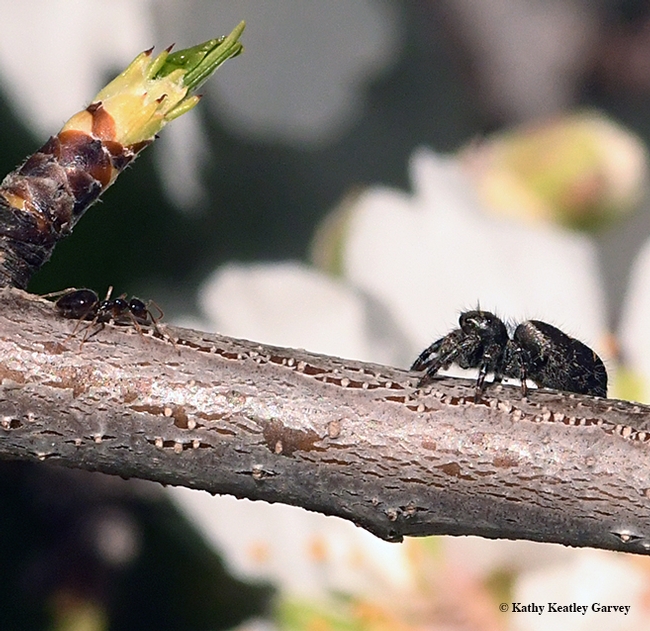
Like a winter ant. Or a jumping spider.
This winter ant, Prenolepis imparis (as identified by ant specialist Brendon Boudinot, a Ph.D. candidate in the Phil Ward lab in the UC Davis Department of Entomology and Nematology), was crawling along a branch of an almond tree last week on Bee Biology Road, UC Davis, when it encountered...oops...a jumping spider (Salticidae).
"I'm sure that ant's fate was soon in the cold embrace of that cute spiders chelicerae," quipped entomologist Wade Spencer of the Lynn Kimsey lab, Bohart Museum of Entomology.
Not this time. No arthropods were harmed in the making of this photo.
Winter ants, says Boudinot, "have a lovely life history, being the only species specialized for activity during the 'dead' of winter." They're sometimes called "false honey ants." BugGuide.net calls this an "unfortunate name, since the storage product in the corpulent young workers of these ants is fatty, not sugary."
According to Ant Wiki, the winter ant "nests deep in the ground. It remains underground during the warmest months of the year, and in many parts of its range forages during times when the temperature is much cooler than other ant species will tolerate. Prenolepis imparis avoids competition with most ant species by not being active at the times of the year when other ants are most actively foraging."
Attached Images:

Can you see an ant and a spider in this photo of an almond tree? It's a winter ant, Prenolepis imparis and a jumping spider, Salticidae. (Photo by Kathy Keatley Garvey)

Eyes to eyes: A winter ant, Prenolepis imparis, encounters a jumping spider on an almond branch on a tree off Bee Biology Road, UC Davis. The jumping spider has four pairs of eyes while the ant has one pair. No arthropods were harmed in the making of this photo. (Photo by Kathy Keatley Garvey)